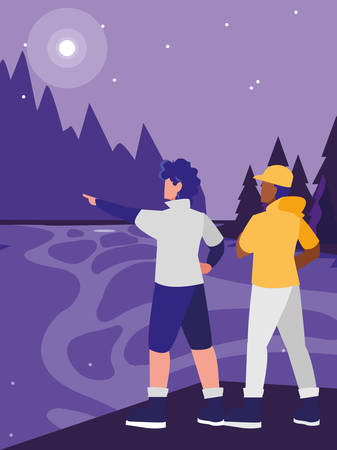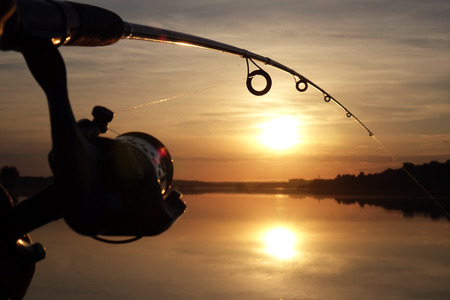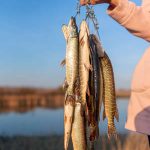1. Understanding Spring Fish Behavior
Spring is one of the best times of the year for fishing, but to make the most of it, you need to understand how fish behave as the seasons change. As temperatures start to rise and daylight hours increase, fish become more active and begin their annual spawning cycles. These changes affect where fish go and how they respond to different baits and techniques.
How Rising Temperatures Affect Fish
As water warms up in spring, cold-blooded fish become more energetic. In colder months, their metabolism slows down, making them sluggish and less likely to chase bait. But once water temperatures reach certain levels—typically between 50°F to 70°F depending on the species—fish start feeding aggressively in preparation for spawning.
General Water Temperature Ranges for Common Species
| Fish Species | Active Feeding Temp (°F) | Spawning Temp (°F) |
|---|---|---|
| Largemouth Bass | 55–70 | 60–75 |
| Crappie | 50–68 | 58–64 |
| Trout | 45–60 | N/A (Trout spawn in fall) |
| Walleye | 40–65 | 44–50 |
| Bluegill | 60–75 | 67–80 |
The Role of Spawning Cycles
Spring is spawning season for many popular freshwater species. Fish move from deeper winter areas into shallow bays, coves, and nearshore flats where the water warms up faster. During this time, males often arrive first to prepare nests, while females follow shortly after. Knowing when and where spawning happens helps anglers target specific locations more effectively.
Tips for Targeting Pre-Spawn and Spawn Fish:
- Pre-spawn: Look for fish staging near drop-offs, points, or channel bends close to shallow flats.
- During spawn: Focus on shallow waters with firm bottoms like gravel or sand where fish build nests.
- Avoid disturbing active beds: Practice ethical fishing by minimizing stress on spawning fish, especially if youre planning catch-and-release.
By understanding how temperature changes and spawning behavior influence fish movement and activity in spring, you’ll be able to choose better spots and techniques—setting yourself up for a successful season on the water.
2. Choosing the Right Gear for Spring Conditions
Spring fishing can be unpredictable, with shifting temperatures, changing water clarity, and active fish behavior. To make the most of your time on the water, its crucial to adjust your gear to match springtime conditions. From rods to reels and lines, here’s how to fine-tune your setup for success this season.
Understanding Spring Challenges
During spring, melting snow and rain can raise water levels and reduce visibility. Water temperatures also fluctuate, impacting fish activity. This means you’ll need versatile gear that can handle sudden changes in weather and water conditions.
Rods: Go Lighter and More Sensitive
In early spring, fish are often sluggish due to cooler water temps. A lighter rod with a sensitive tip helps detect soft bites from lethargic fish. As the season warms up, you may want a medium power rod to handle more aggressive strikes.
Recommended Rod Types:
| Spring Condition | Rod Type | Action | Power |
|---|---|---|---|
| Cold Water / Early Spring | Spinning Rod | Fast | Light to Medium-Light |
| Warming Waters / Mid to Late Spring | Baitcasting Rod | Moderate-Fast | Medium to Medium-Heavy |
Reels: Match Your Rod and Target Species
Your reel should pair well with your rod and have smooth drag performance—especially important when targeting species like bass or trout during their active spring periods. Spinning reels are great for finesse presentations, while baitcasters offer better control for heavier baits.
Quick Reel Tips:
- Spinning Reels: Ideal for lighter lures and clearer water.
- Baitcasting Reels: Better for precision casting in cover-rich areas.
- Smooth Drag: Essential for managing sudden runs from springtime fish.
Line Selection: Adjust for Clarity and Cover
The right fishing line makes all the difference in spring. With murky water, you can go slightly heavier without spooking fish. In clear water, opt for lower visibility lines like fluorocarbon.
Line Comparison Table:
| Condition | Line Type | Pound Test (lb) | Best Use Case |
|---|---|---|---|
| Muddy/High Water | Braided Line | 20–30 lb | Heavy cover, strong hooksets |
| Clear Water | Fluorocarbon Line | 6–12 lb | Lighter lures, finicky fish |
| Mild Clarity / All-Purpose | Monofilament Line | 8–15 lb | Topwater, general use |
Tuning Your Setup for Success
No single setup works for all spring fishing scenarios. That’s why it’s smart to bring a few rod-and-reel combos with different line types. This way, whether youre pitching jigs into brush or casting crankbaits across open flats, you’re ready for whatever spring throws your way.
Pro Tip:
If youre unsure what conditions youll face, start with a medium power spinning combo spooled with 10 lb fluorocarbon—it offers solid versatility across many spring situations.

3. Mastering Live Bait and Seasonal Lures
Spring fishing is all about matching the hatch — that means choosing live bait and lures that mimic what fish are naturally feeding on during this season. As water temperatures rise, species like bass, crappie, and trout become more active and start feeding aggressively. Knowing what they’re after can make all the difference between a slow day and a successful one.
Best Live Bait for Spring Fishing
Live bait remains a go-to option for many anglers in spring due to its natural movement and scent. Here are some of the top choices:
| Bait Type | Target Species | Tips for Use |
|---|---|---|
| Nightcrawlers | Bass, Trout | Use with light tackle near shorelines or under bobbers. |
| Minnows | Crappie, Bass | Hook through the lips or back; great for drifting or under floats. |
| Waxworms | Trout, Panfish | Ideal for cold mornings; pair with small jigs or use alone on hooks. |
| Crawdads (Live Crawfish) | Largemouth Bass | Fish around rocks and submerged wood where crawdads hide. |
Top Seasonal Lures That Work in Spring
If live bait isn’t your thing, seasonal lures can be just as effective — especially when targeting aggressive spring feeders. The key is to choose lures that resemble spawning baitfish or other common forage.
Lure Recommendations by Species
| Lure Type | Description | Target Species |
|---|---|---|
| Suspending Jerkbaits | Mimic injured baitfish; great for stop-and-go retrieves. | Bass, Trout |
| Paddle Tail Swimbaits | Create lifelike swimming motion; ideal in clear water. | Bass, Crappie |
| Tiny Tube Jigs | Irritate bedding fish; perfect for sight fishing crappie. | Crappie, Panfish |
| Spoon Lures | Mimic shiny baitfish flashes; good in deeper areas. | Trout, Bass |
| Ned Rigs | A finesse favorite; excels in pressured waters. | Bass (especially smallmouth) |
Tips for Success When Using Bait and Lures in Spring
- Tune into water temperature: Fish become more active as temps hit the 50–65°F range. Adjust your presentation speed accordingly.
- Mimic local forage: Observe what baitfish or bugs are present and try to match color and size.
- Tweak your retrieval: Slow retrieves with occasional twitches often trigger strikes from wary spring fish.
- Select natural colors in clear water: Use greens, browns, or translucent patterns when visibility is high.
- Add scent to artificials: Boost effectiveness of soft plastics by applying scent attractants like garlic or shad oil.
The right combination of live bait and seasonal lures can help you unlock the full potential of spring fishing. Whether youre chasing bass staging near shallow cover or trout cruising creeks after winter thaws, adjusting your approach with the right bait makes all the difference.
4. Targeting Prime Locations
As spring temperatures begin to rise, fish become more active and start moving from their deep winter holding spots to shallower waters. Knowing where to find them is key to a successful day on the water. During this seasonal transition, certain areas consistently attract fish due to warmer water, increased food sources, and ideal spawning conditions.
Hotspots to Focus On
Here are some of the most productive spring fishing locations you should target:
| Location Type | Why Its Effective in Spring |
|---|---|
| Shallow Flats | These areas warm up quickly under the sun, attracting baitfish and encouraging bass and other species to move in for feeding and spawning. |
| Creeks and Inlets | Flowing water brings oxygen and food, drawing in fish that are looking for both comfort and a quick meal. |
| Structure-Rich Areas | Docks, fallen trees, submerged brush, and rock piles offer cover and ambush points for predatory fish like largemouth bass and crappie. |
Tips for Finding These Locations
- Use a Fish Finder: If youre fishing from a boat, electronics can help you locate drop-offs near shallow flats or hidden structure below the surface.
- Look for Water Movement: Spots where creeks enter a lake often create current that attracts fish.
- Pay Attention to Sunlight: South-facing shorelines warm faster and may hold more active fish early in the season.
Timing Matters
The best time to fish these areas is usually mid-morning through late afternoon when the water has had time to warm up. Fish tend to be more active as the temperature rises throughout the day.
Pro Tip:
If youre bank fishing, focus your casts near visible structure or along gently sloping shorelines with gravel or sand — common spawning grounds for many freshwater species.
5. Timing Your Fishing Trips
When it comes to spring fishing, timing can be just as important as the bait you use or the spot you choose. Spring weather is unpredictable, and fish activity changes quickly based on factors like time of day, water temperature, and shifting weather conditions. Understanding how these elements influence fish behavior will help you plan smarter and catch more.
Time of Day Matters
In early spring, mornings tend to be colder, and fish are less active when the water is chilly. As the sun rises and warms up the shallows, fish begin to move around more. Midday to late afternoon often brings the best bite windows during this season. Keep in mind that different species may prefer different times:
| Species | Best Time to Fish |
|---|---|
| Bass | Late morning to afternoon |
| Crappie | Early morning & dusk |
| Trout | Mid-morning to early afternoon |
Watch the Water Temperature
Water temp plays a huge role in spring fishing. Most freshwater gamefish become more active once the water starts warming above 50°F. Bass start spawning in the mid-50s to 60°F range, while crappie spawn slightly earlier. Use a thermometer or check local reports before heading out.
General Activity by Water Temperature:
| Water Temperature (°F) | Fish Activity Level |
|---|---|
| Below 50°F | Low – fish are sluggish and deeper |
| 50–60°F | Moderate – pre-spawn movement begins |
| 60–70°F | High – peak activity and spawning period |
Keep an Eye on Weather Changes
Spring storms and cold fronts can shut down a hot bite in no time. After a front passes through, fish often go deeper and become less aggressive. On the flip side, stable warm weather for a few days can really fire up feeding action. Barometric pressure also affects bites — falling pressure before a storm usually triggers more activity.
Pro Tip:
If a cold front just moved through, try slowing down your presentation and targeting deeper structure until things stabilize.


